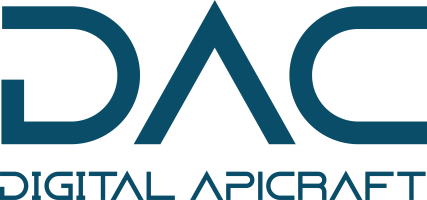API has become one of the most crucial standards in making and running modern devices. An API product is a group of resources with metadata and quota control that you can use to provide your developer community with productized and specialized API bundles. APIs give insight to the development team to deploy and configure DevOps infrastructure. Most API products allow you to repack the APIs dynamically without any further setup or code. It enables API-driven organizations to get deeper insight than only engineering metrics such as latency and failure.The API metrics provide information on the effectiveness of your operating applications, which are valuable for comparing the website and tracking the time frame for a longer time. However, operational metrics are the most fundamental subset of the API metric structure. The measurement of this API in API platforms consists of CPU, several API calls, and memory use. So, here in this blog, we will focus on the API product metrics necessary for the Development team.
Need of API for an Organization
An API or Application Programming Interface enables components of systems to communicate with each other using specific protocols and definitions. In simple terms, it acts like policies determining how information could be transferred or shared between the two devices. It is a vital component as it makes it easy for you by extending the software’s capabilities and functionalities without increasing the integration cost.Different types of API platforms you can use in your business process are:-
- User Facing API
- Internal API
- Third-Party API
- Web Page URL
What Is API Monitoring?
Using right-away solutions for the functionalities such as ChatBots, payments, user tracking, and many more has become very common, but it comes with some disadvantages. If you are using the code and infrastructure of someone else, someone will take control of your hands, and your customers or users will have to rely on their abilities. In this case, you always have to monitor whether they provide reliable and fast services to your customer that would match your terms and condition of performance.To ensure API platforms are up & running continuously, you must set up API monitoring. It enables you to track and monitor the best API platform’s API integration. So, in simple terms, API monitoring is the best way to ensure that the third parties are working and delivering the same quality services.
API Performance Metrics for Every Development Team
The most crucial API metrics every API developer and product manager of the best API platform should know, particularly when you are looking into API reporting and analytics.
Request Per Minute (RPM)
Request per Minute or RPM is used to determine app throughput handled by the application manager. It is the upper bound for the application interface as the latency provoked is not considered by the server during the output and input functions. It is a performance metric that should be made to decrease the number of API calls. To ensure the flexible pagination scheme, you must keep subsequent batching of the page structure in a single monitoring schedule. However, the dependency of API usage might vary as the requirement.
Average and Max Latency
Elapsed time or API latency tracks the user experience, which correlates to the drop in the responsiveness of the user in the upscaled level metric. Maximum and average latency may not provide an accurate understanding of the expanded metrics, but it is crucial for understanding the changes in the API platforms. Tracking different project endpoints, schema change, and API versions provides the precise reason for the lack of responsiveness. However, monitoring your applications while latency breakdowns are critical. Moreover, choosing the best API platform is crucial to take advantage of this feature.
Errors Per Minute
EPM or Errors per Minute is the count of the API calls with the non-200 families’ status codes per minute. It automatically prevents the processing of the extra calls after reaching the limit, determining error-prone & important API calls. Prototyping and designing API is one of the most crucial tasks for understanding error types happening with code using correct HTTP status codes. System and user errors from a poorly designed API might hurt the user experience. You always have to check the limit rates to understand the no. of Errors per minute requested. However, limiting the API calls is one of the best practices for diagnosing this problem.
Availability and Uptime
Availability and Uptime of service consist of the essential metrics performance of the Service Level Agreement or SLA. To indicate the Uptime and downtime annually, the availability measures are present in the set of 9s. Certain services have a lower time handling the outages without hampering the service. SDKs queue data in the crucial stages while monitoring the API. The Uptime performance metrics assist in configuring the probes to run on fixed intervals to store or back up other services without interrupting the app interface.
CPU Usage
One of the crucial components of API platforms responsiveness is CPU usage. Tech managers can use CPU usage to assess API health or for resource planning. The apps like API bandwidth to gateway services have high CPU server usage that leads to application encoding and ML workloads through the floating-point differences. CPU and system usage can be easily seen through the Cryptographic network protocols.
Conclusion
Whether launching a web service or a new application, developing and monitoring an API is necessary. However, you must choose the right metric & best API monitoring solution for specific use. DigitalAPICraft offers the best API platform that enables you to monitor and track the performance of APIs to ensure a seamless user experience.Read our blog How to Build an Effective API Marketplace to know more about developing an API Marketplace.


